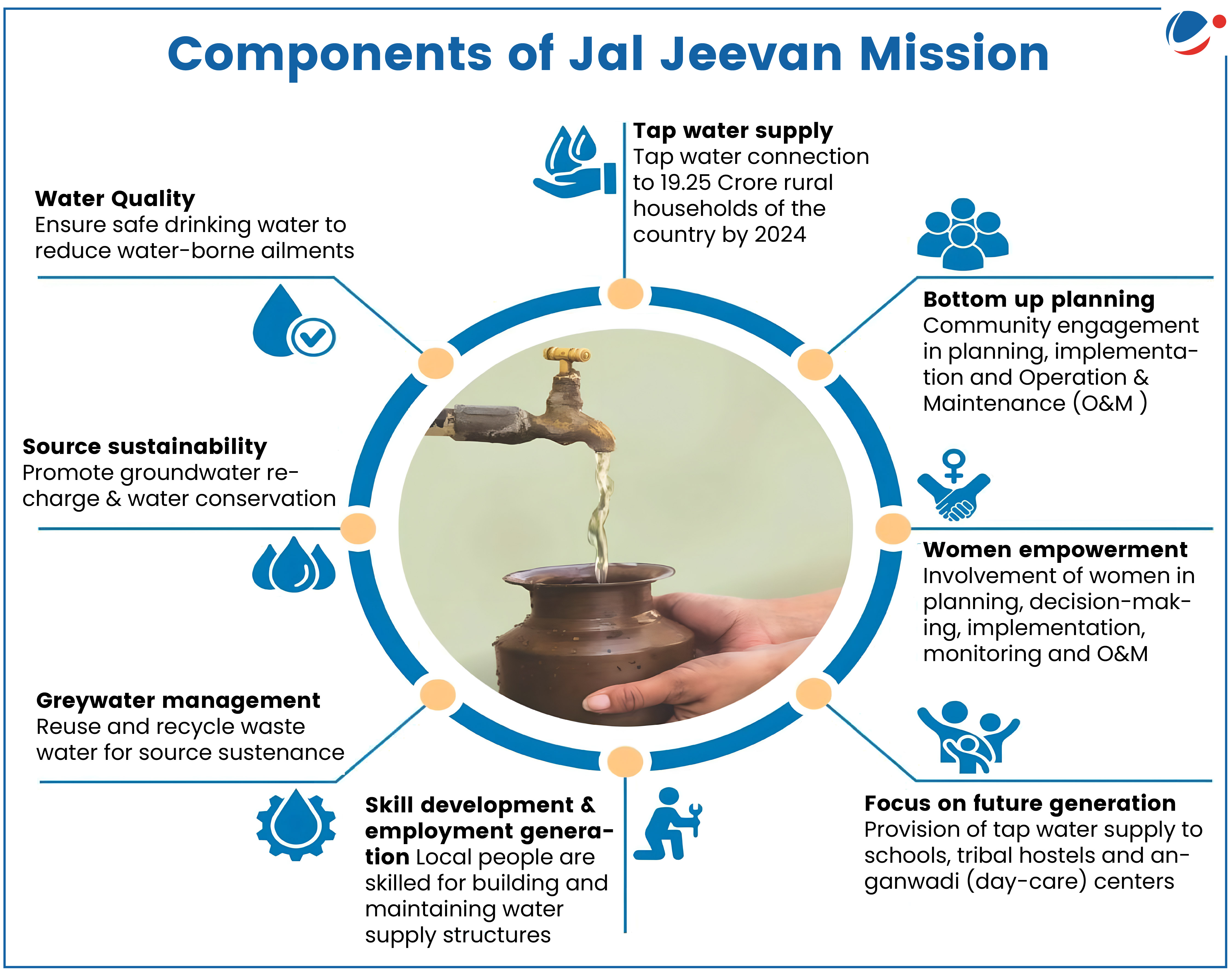Launched in 2019, JJM was aimed at providing functional household tap connections (FHTC) to provide 55 litre per capita per day drinking water to all rural households in country by 2024.
- JJM emphasizes village-level planning and community participation in all water supply decisions.
- Mission mandates that at least 50% members of Village Water & Sanitation Committee/ Pani Samiti need to be women.
About JJM
- Background: National Rural Drinking Water Programme was restructured and subsumed in JJM.
- Nodal Ministry: Department of Drinking Water and Sanitation, Ministry of Jal Shakti.
- Type: Centrally Sponsored Scheme.
- Funding pattern between Centre and State:
- 90:10 for Himalayan (Uttarakhand, Himachal Pradesh) and North-Eastern States.
- 100% for UTs.
- 50:50 for rest of the States.

Key Achievements under JJM
- Over 12 crore families have gained access of piped drinking water since 2019, up from 3.23 Crore (Economic Survey 2024-25).
- States achieved 100% coverage: Arunachal Pradesh, Goa, Haryana, Himachal Pradesh, Gujarat, Punjab, Telangana and Mizoram.
- UTs achieved 100% coverage: Andaman & Nicobar Islands, Dadra Nagar Haveli & Daman Diu and Puducherry.



